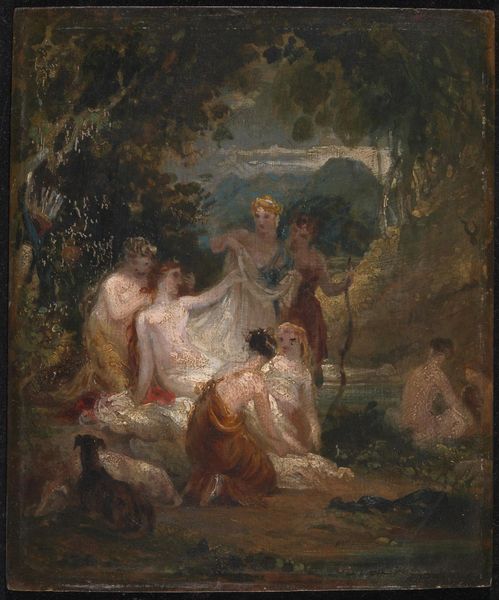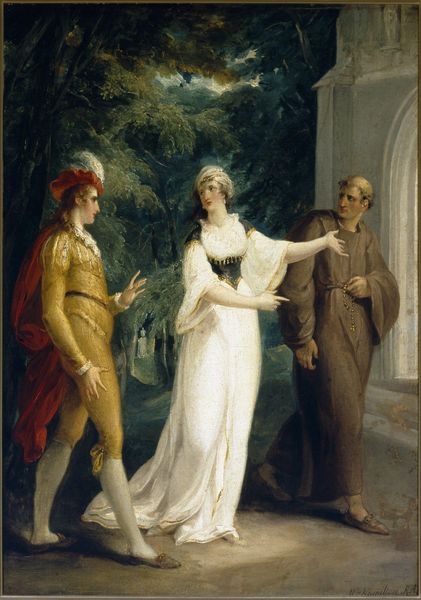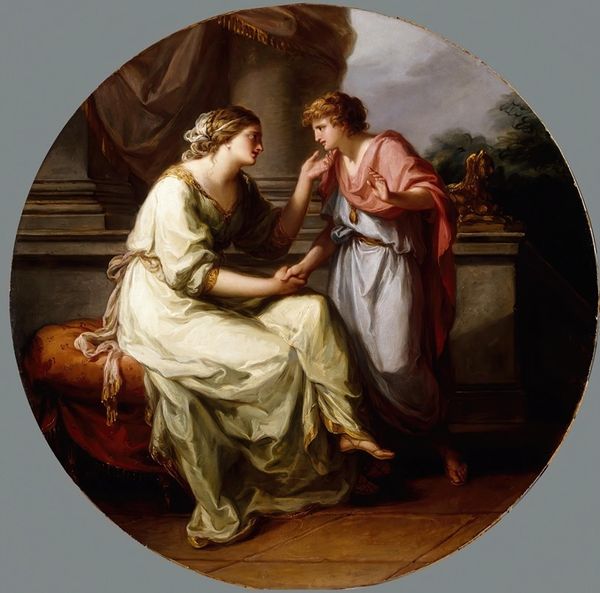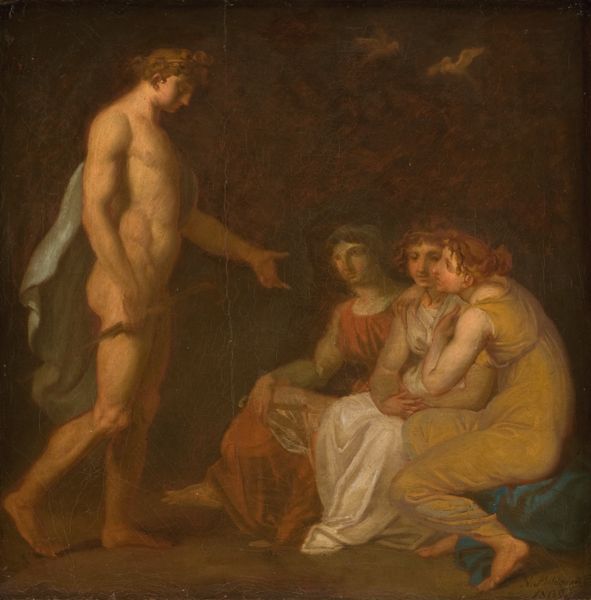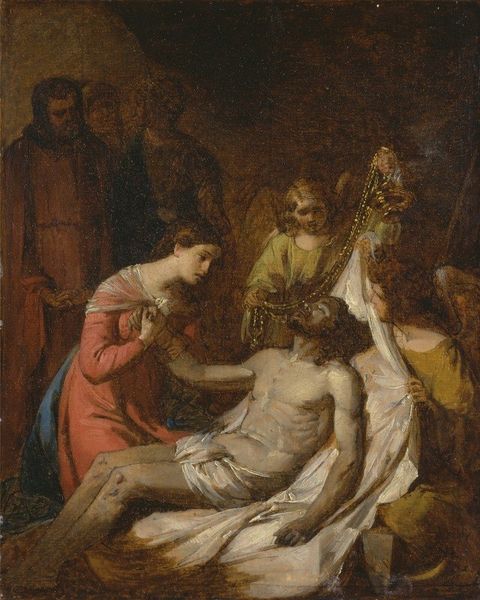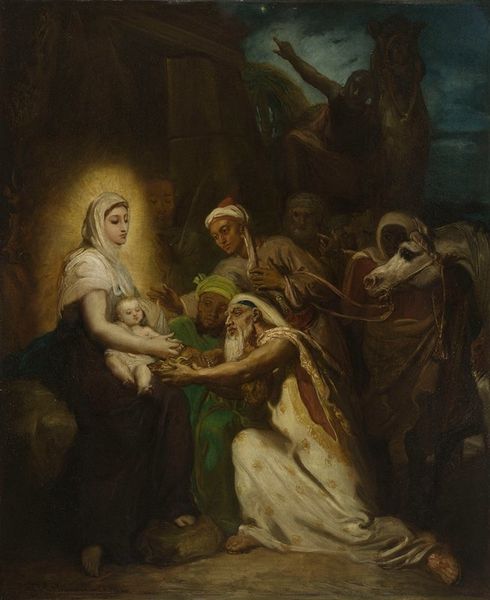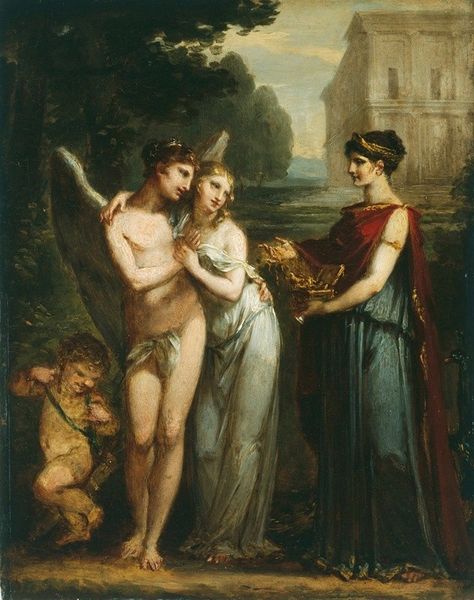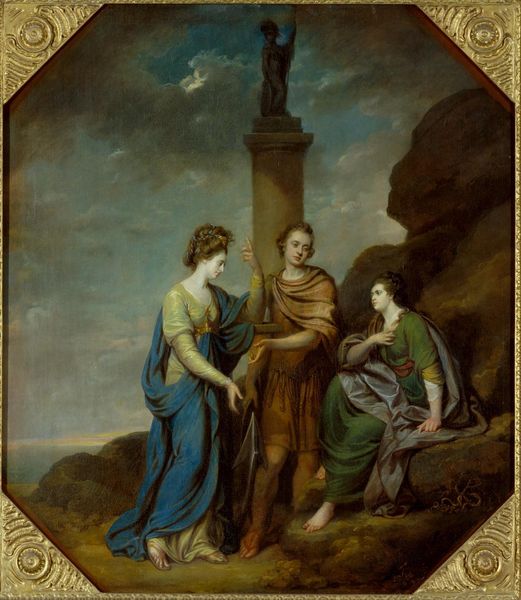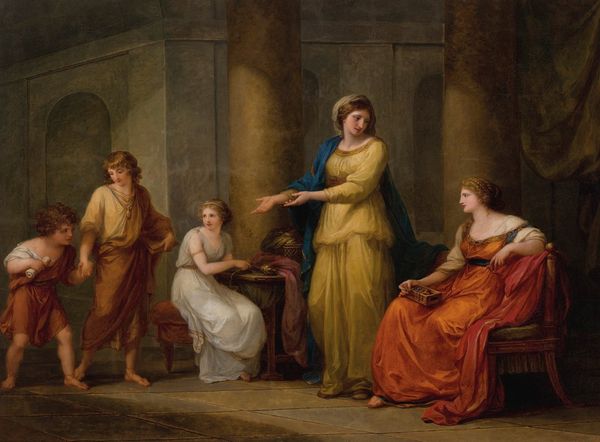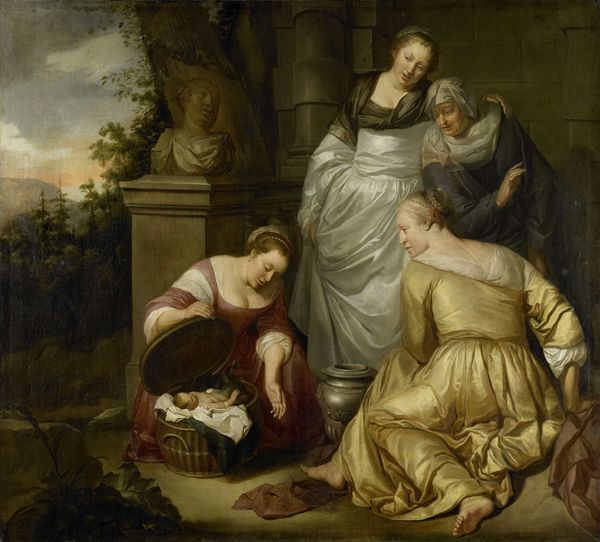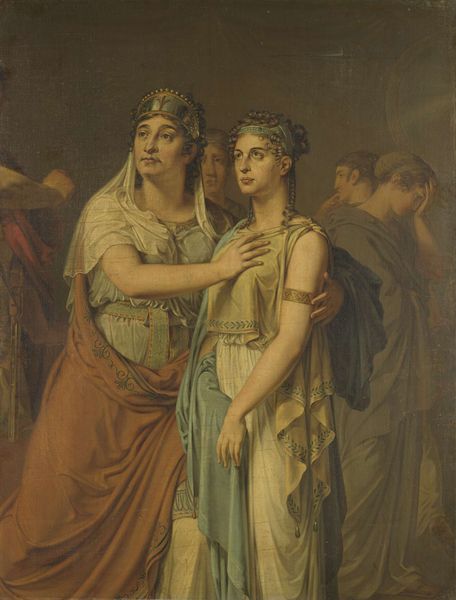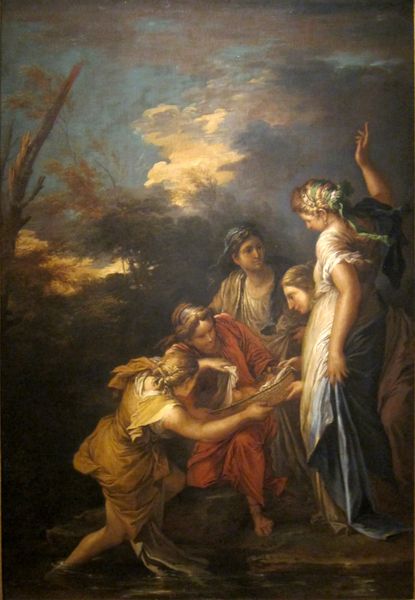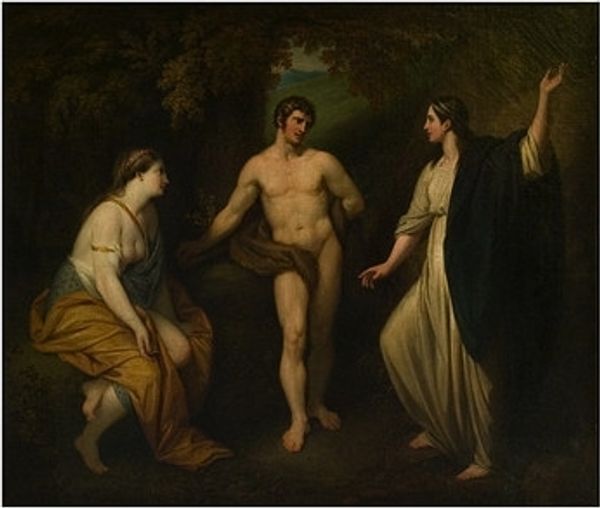
Dimensions: support: 961 x 769 mm
Copyright: CC-BY-NC-ND 4.0 DEED, Photo: Tate
Curator: This is George Dawe's "Naomi and her Daughters," now at Tate Britain, painted sometime before the artist's death in 1829. I'm struck by the heavy drapery and somber tonality. Editor: The fabric really *is* the subject here, isn't it? Look at the way the light catches on those folds, especially in Naomi's ochre robes. It almost obscures the figures within. Curator: But that concealing effect is central to understanding the painting. It mirrors the emotional weight of the Biblical story, the deep sorrow of loss, and the women's symbolic roles. Editor: Perhaps. Or, it's a study in available pigments. Those earth tones would have been cheaper and easier to source than brighter hues, influencing the painting's overall palette and mood. Curator: Regardless, the image endures, still resonating across centuries. Editor: Yes, even with its constraints.
Comments
tatebritain 8 months ago
⋮
http://www.tate.org.uk/art/artworks/dawe-naomi-and-her-daughters-t05746
Join the conversation
Join millions of artists and users on Artera today and experience the ultimate creative platform.
tatebritain 8 months ago
⋮
This scene is from the Old Testament: Naomi, in the centre, encourages her two widowed daughters-in-law to return to their people rather than accompany her to Bethlehem. George Dawe shows the moment when Orpah (left) leaves weeping, but Ruth (right) clings to Naomi and refuses to go. This was the first painting Dawe exhibited at the Royal Academy. By demonstrating his ability to paint emotive and high-minded subjects, Dawe likely hoped the painting would help him stand out as a talented newcomer. The restrained colours, sculptural style and idealised figures were popular with painters at the time. Gallery label, February 2024

